What you’ll learn
This article is Part 4 of the ACL Reconstruction Surgery series, especially for fit, active folks and rock climbers. Congrats, you’ve made it to your 1 month anniversary from ACL reconstruction! Progress is motivating, but let’s stop to look at what’s really happening to your graft so you can plan your back-to-sport according to science, not your emotions.
Graft Healing
The most frustrating aspect of ACL surgery is the 12+ month recovery time for the graft itself, which is invisible, can’t be speed up, and has no feedback mechanism like pain. The more motivated you are, the more at risk you are for tearing your graft. You’re probably physically and mentally feeling great by now. Don’t let that fool you into what’s really going on inside. There’s no blood flow inside your knee cavity, so healing is incredibly slow.
Most of this info is compiled from my conversations with surgeons and physical therapists and from research articles, references:[1] [2] [3] [4]
Day 0 – Month 1: Graft Necrosis (it dies)
The collagen fibers degrade, which decreases its mechanical strength. Also, the fixation points of the graft to bone are just starting to heal.
There’s a balance between protecting the graft and giving it enough mechanical load to promote healing. There’s a ton of research for eccentric loading to promote tendon healing in general–see Dave MacLeod’s Make or Break climbing injuries or running literature–no loading of tendons is worse for recovery than some loading.
Months 1 – 3: Proliferation and Revascularization
The necrosis phase leads to a growth phase and increased cellular activity as the body grows new blood supply, replacing old cells. The mechanical strength still decreases and is at its weakest point in this phase. The fixation points are still healing to fuse the graft to bone. At this point, your muscles feel great and you want to get back to sport, but the graft is very weak–I’ve heard down to 30% strength.
It’s now a mental game, holding yourself back from pushing too hard while your body seems to be strong and fine.
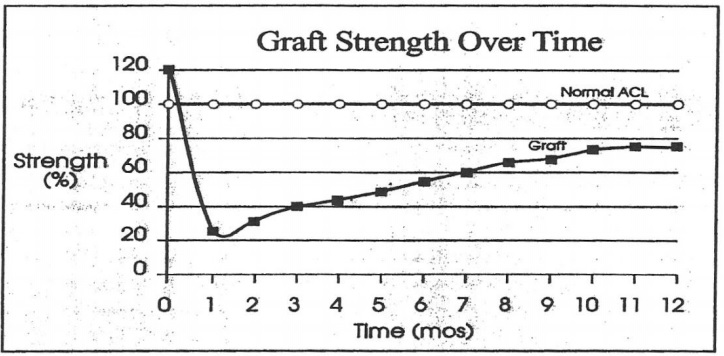
Month 3 – Month 18+: Ligamentization
After 3 months, new collagen forms and the graft starts to slowly resemble a ligament. The mechanical strength starts increasing. Most often, I hear “back to sport” time as 6-9 months for autografts and 9-12 months for allografts, but digging further, it should be much longer.
The limited studies done (not many actually biopsy human grafts post-surgery) show changes in the ligament up through 24 months. The strength graph is asymptotic, but there’s no knowing where the inflection point is or when it’s strong enough for what you want to do. While it’s possible to return to sports* in the purported 9ish months, it’s a risk game. I waited 9 months after my 1st surgery to get back to bouldering, which ended up in a 2nd surgery.
*rock climbing bouldering impacts aren’t normal even with two intact ACLs, and most orthos and PTs don’t understand the enormous impacts we take falling
Don’t Fool Yourself into Going Back to Sport too Early
Yes, this deserves a long section heading. I’ve talked to numerous people who’ve gone through ACL surgery, and the most common link between them is ego. The more you think you’re athletic and strong, the less attention you’ll pay to PT and the more you’ll push yourself back to sport. And sports like bouldering aren’t normal impact.
No matter how strong you are, your graft isn’t ready yet for full forces. Trust me, you don’t want to do this surgery again. I’m the third climber I know who’s done ACL reconstruction surgery twice.
Getting antsy? Read up on mobility and weightlifting and incorporate that into your workouts. My actually-worth-it-to-read book list is here.
Milestones
- Month 3: Started running on flat surfaces, started weight lifting. Did equal workouts of barbell lifting, kettlebells, and climbing training.
- Month 5: Started hiking, top roping (no lead climbing), lateral movements
Brace
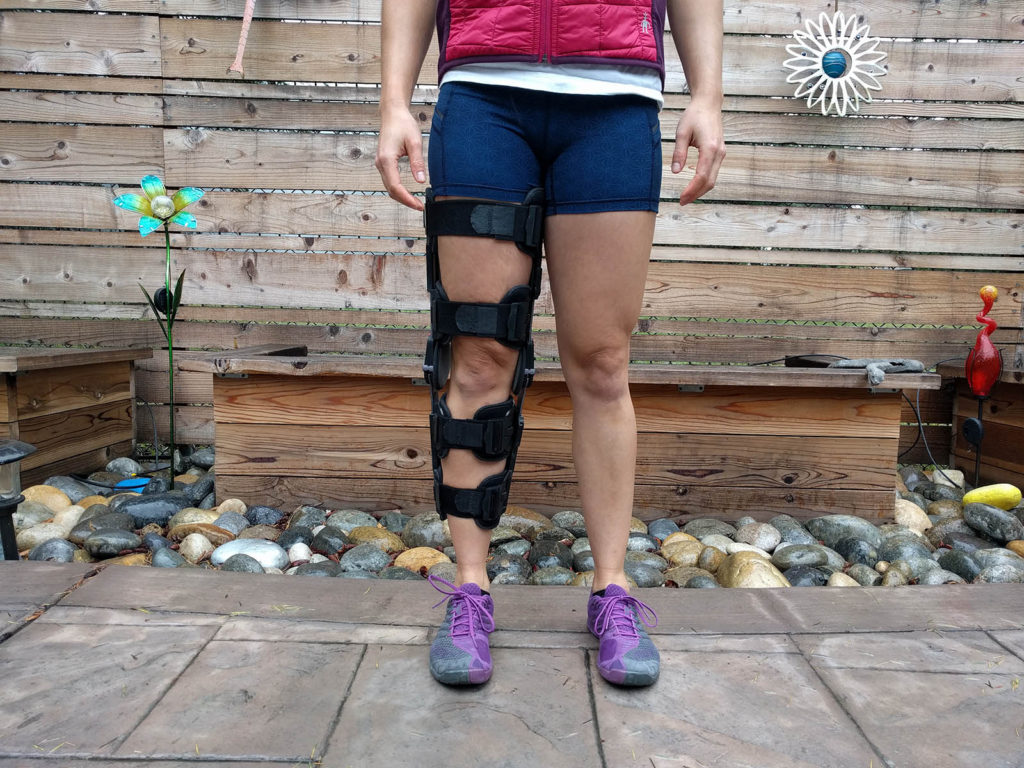
I ditched the full leg length brace at the end of month 1 and graduated to a smaller metal brace. For months 2 and 3, I wore the smaller brace every time I went out of the house. After month 3, I only wore the brace when working out or when I felt I needed it, like when hiking.
Physical Therapy
I continued PT through month 6 at 2x/week. I worked out 3x/week on my own to do PT exercises more and for rock climbing conditioning. That ended up being at least 12 hours of workout a week between PT and my own!
PT made sure I could run with good mechanics starting at month 3–you’d be surprised what minor hop drops or favoring of one side you have. My hamstring was feeling good and I started weight lifting, doing squats and deadlifts. From months 3 through 6, I had a diet of lifting 2x/week, until I could squat my bodyweight and deadlift 1.5x bodyweight. I always lowered slowly–eccentrically loading my posterior (see below).
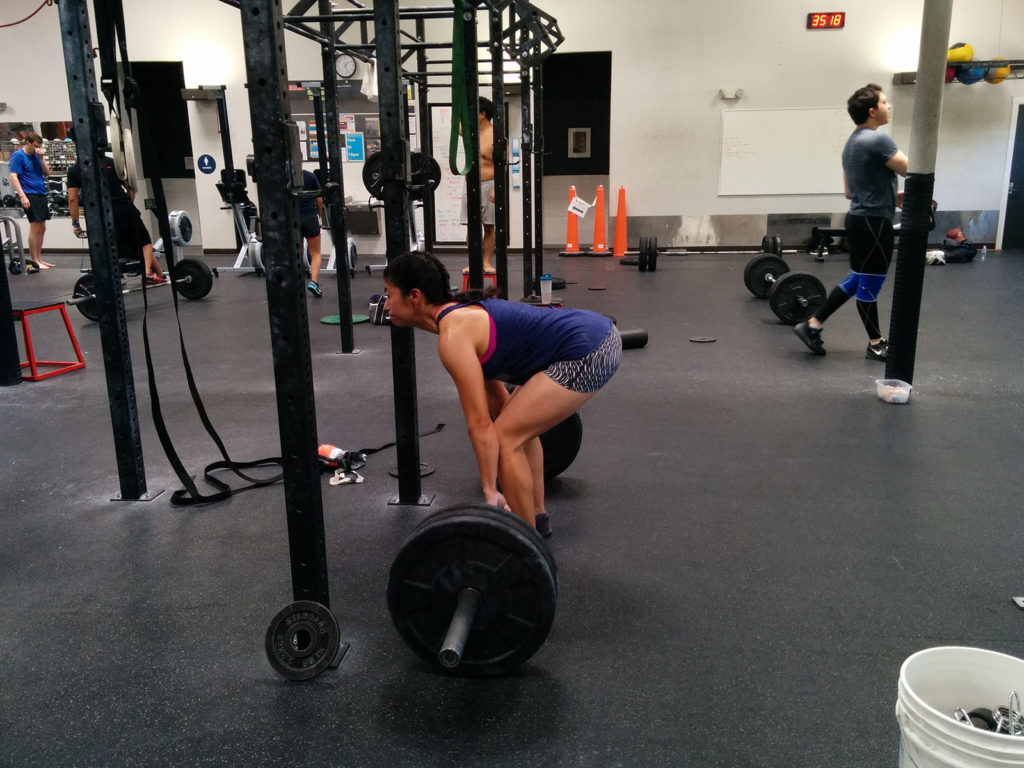
Kettlebells: Quite possibly the best tool for ACL recovery for climbing
At month 4, PT started me on kettlebells, which I had always associated with Crossfit, but have since fallen in love with them and have bought a full set myself.
- Eccentric loading rebuilds tendons. Kettlebell swings are load under extension, meaning you’re working to slow down the kettelbell while your hamstrings are stretching. Eccentric loading rebuilds tendons. I added kettlebell swings, single-leg deadlifts, and a multitude of shoulder stability exercises.
- Slowing a ballistic kettlebell mimics falling. You stop your bodyweight or stop your kettelbell.
Kettlebells were so integral to my successful recovery after my 2nd surgery that I’ve written another series Kettlebells for Climbers and ACL Rehab. I strongly believe they’re one of the main factors that made my 2nd surgery successful, compared to the first.
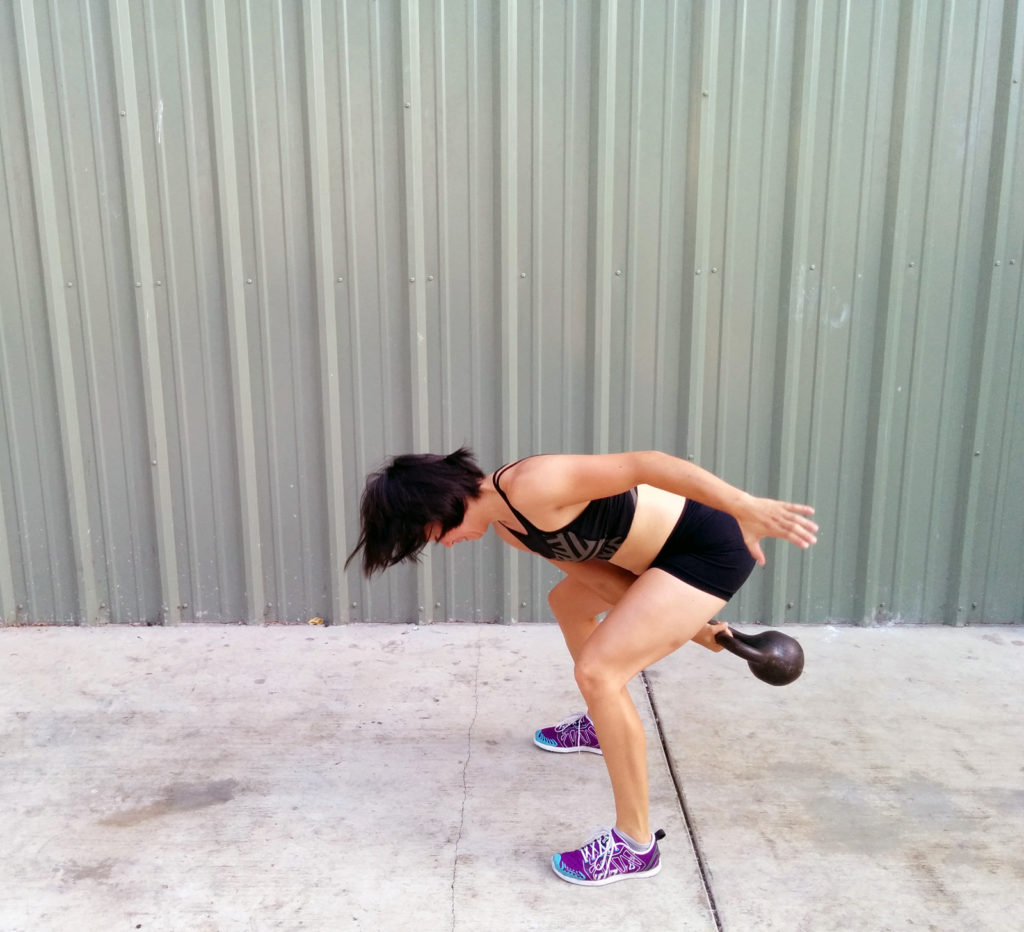
At about month 5, PT started getting interesting with doing single-leg squats on an upside-down bosu ball while throwing a medicine ball back and forth, and other such exercises. I never thought I’d do such exercises, nor think I’d need them in rock climbing, but I’ve also never felt stronger or more stable.
By month 6 I was doing pistol squats.
Working Out
I trained for rock climbing about 50% of the time and did my PT exercises the other 50%. See my articles on training slopers and pinches and favorite workout gear for ideas. The Nossk pulley suspension trainers are a $40 option to TRX and come with a pulley for stability training!
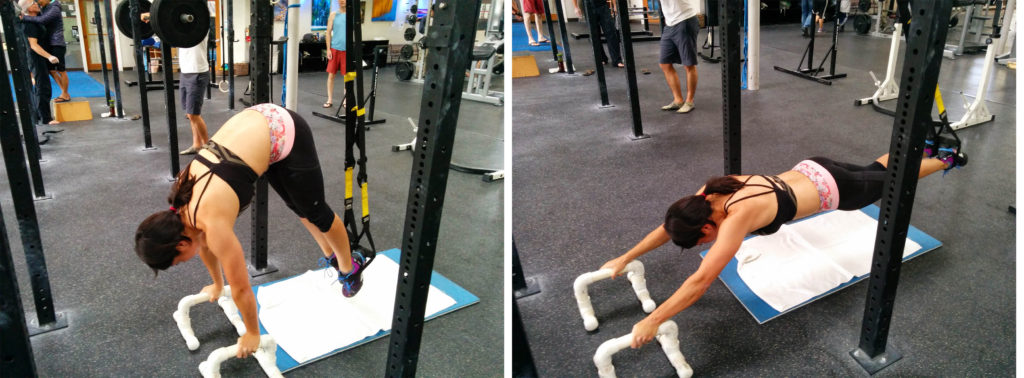
At month 5, I was cleared for lateral movements, which meant I could hike with a brace and I started top roping. I could’ve top roped at month 3, but I would’ve been handicapped to straight up-and-down. I knew that I’d get frustrated at not being able to do more and would try to push myself; the best course for me was to wait till month 5 before climbing.
Mentally
One of the hardest parts for me was to ward off people’s incessant questions.
Them: “When are you going to climb again?”
Me: “Not for another year.”
Them (same people, the next week): “When are you going to climb again?”
Me: “Not for another year” (mentally: please don’t ask me for at least 2 weeks)
Everyone means well, and I really liked the support, but in some ways it made me feel like I should be climbing, and the explanation of why I wasn’t climbing despite being able to pistol squat was a bit too much to regurgitate every week. Most people can’t fathom what you’ve just gone through. Don’t be pressured into going back to sport. Listen to your body.
You’ll also probably by now swear that you’ve either loosened a bone screw or tore your new graft. The paranoia is normal; many people I’ve talked to have sworn they’ve had the same thoughts multiple times!
→ Explore more articles in Climbing, Fitness, ACL
